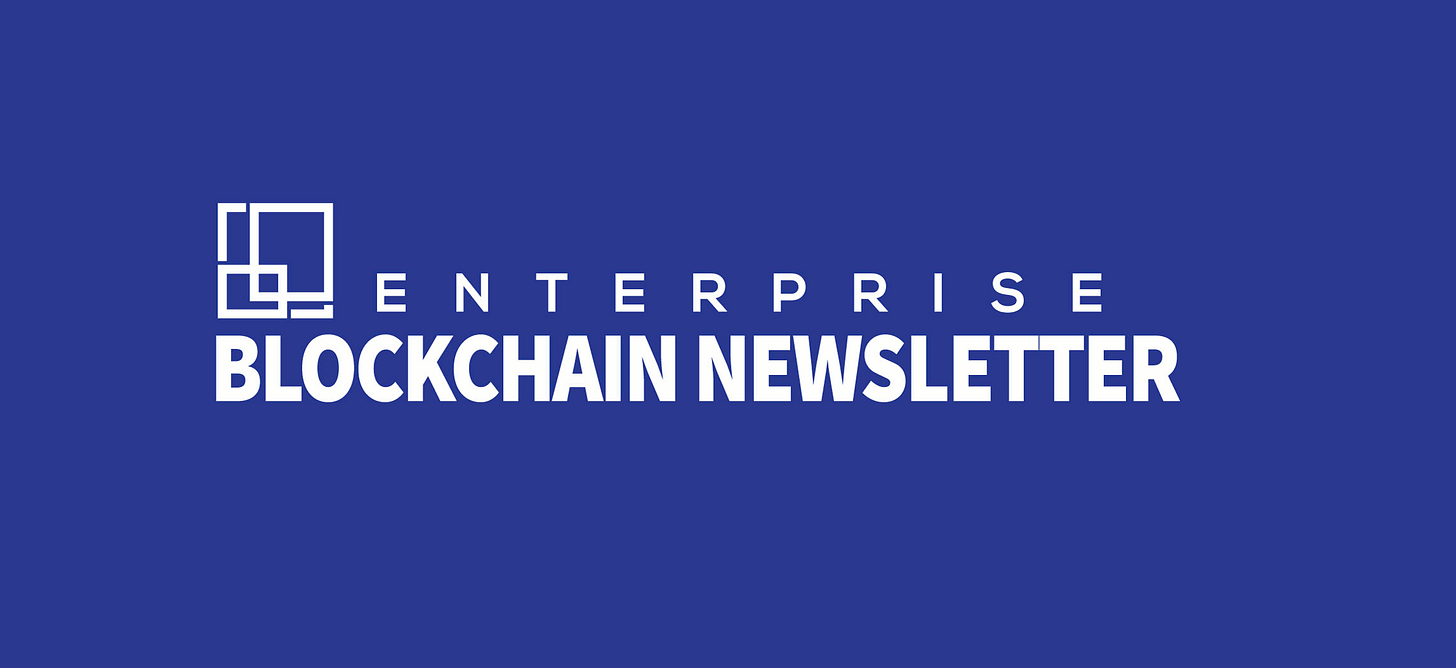Enterprise Blockchain Newsletter #11
Extensive summary of the notable Enterprise Blockchain news in the last weeks

I was asked several times what had happened with the Enterprise Blockchain Newsletter. The truth is, I was so busy with work that I couldn’t create time for it. But here we are, back at it! In the meantime, I started writing for Forbes. You can find some of my blockchain articles here.
Recently, in our enterprise blockchain space, we have had several exciting news items that I will cover in this issue. Our industry keeps evolving and pushing the technical boundaries of distributed ledger technology. Overall, I see a push toward combining efforts, as well as less tribalism among the various blockchain camps. I also see some pretty exciting new launches.
Hyperledger Besu/PegaSys
No surprise here. The fact that PegaSys’s Pantheon Ethereum client is moving under the Hyperledger umbrella is the top news in this issue. Here’s what has happened:
PegaSys developed Pantheon as an open-source client under an Apache 2 license focusing on enterprise features.
So far, Pantheon (as compared to J.P. Morgan’s Quorum Ethereum client) offers several benefits, like the license, the focus on privacy and permissioning in the features set, a better consensus algorithm (IBFT 2), and a more active development team.
ConsenSys, the company that has paid the salaries so far, has decided to donate the code and move it under the Hyperledger umbrella.
While this is great news, and I hear Mendelssohn between the Ethereum and Hyperledger camps, there are a few interesting open questions:
While the tribalism between Ethereum and Hyperledger is at its low now, what will happen with all 15(!) projects under Hyperledger itself? Is there enough business for all of them? Or will we see more mergers soon?
How will the competition for the title "Official Ethereum Enterprise Client" evolve between Quorum and Besu?
Will the Hyperledger community really embrace the new adopted child? In the past, the protocols were developed from scratch, so this is the first instance in which a protocol comes and is already production-ready.
Will ConsenSys still be motivated to financially support Besu now?
Hedera Hashgraph
Hedera, an enterprise-focused distributed ledger protocol (not a blockchain) that uses a DAG (directed acyclic graph), is planning to launch on September 16th. DAGs hold the promise of having higher throughput and lower latency and being more scalable than blockchains. Hedera has also recently announced that the Hedera Governing Council was joined by IBM, Boeing, Tata Communications, and banking software company FIS. The project was met with public scrutiny(FUD) by popular researcher Eric Wall and triggered a response by Paul Madsen, technical lead at Hedera. The whole story can be tracked below:
Eric’s initial post: https://medium.com/@ercwl/hedera-hashgraph-time-for-some-fud-9e6653c11525
Paul’s response: https://www.hedera.com/blog/counter-fud
Eric’s counter response: https://medium.com/@ercwl/counter-counter-fud-afed13a378c9
When the network is live, we will need to evaluate the technical promises for fairness and the consensus algorithm.

Enterprise Ethereum Alliance telecom use cases
EEA published a detailed telecom use case which details the areas where blockchain technology and EEA standards can improve business processes and optimize the workflow business interactions across the global telecom sector. The six areas are:
1. Use Case 1: Blockchain-Based Telecom Call Roaming User Authentication
2. Use Case 2: IoT Trust Attributes and Reputation Evaluation
3. Use Case 3: Data Privacy and Monetization
4. Use Case 4: Digital Contents Distribution Platform: Property Management and Distribution Market
5. Use Case 5: CX in SDP Delivery Models
6. Use Case 6: Identity Attestation Flows for ISP Services and Components for Abstract API Creation
https://entethalliance.org/wp-content/uploads/2019/08/EEA_Telecom_Use_Cases.pdf
DTCC on governance
This is a whitepaper from the Depository Trust & Clearing Corporation (DTCC) detailing what is important in the governance of distributed ledger platforms. The key points:
* Creating a steering committee
* Functional working group
* Technical working group
* Change management
* Runtime operations – where monitoring and support are the key parts!
* Data management
* Cybersecurity operations
http://perspectives.dtcc.com/articles/governing-dlt-networks

ASX, Digital Asset, and VMware join forces on DLT
The Australian Securities Exchange’s CHESS (equities clearing and settlement system) replacement is undoubtedly the largest and most significant DLT implementation happening now in the world. Its outcome will have a significant impact on the way we talk about blockchains and DLT. ASX has partnered with VMware and Digital Asset to boost their product and services provision and support the distributed ledger and associated infrastructure, which delivers ASX’s data privacy, confidentiality, and security requirements at a greater scale.
Franklin Templeton will use blockchain for money funds
Why is this significant? Well, Franklin Templeton is one of the world’s largest asset managers, with over $700 billion AUM. So, it filed a prospectus in which it explains that the ownership of the money-market fund it will offer will be recorded in two separate locations: a traditional book entry and on the Stellar blockchain network. Franklin Templeton sees the benefits of a blockchain in enabling P2P transactions but that will come later.
https://www.sec.gov/Archives/edgar/data/1786958/000113743919000429/fttn1a092019.htm


